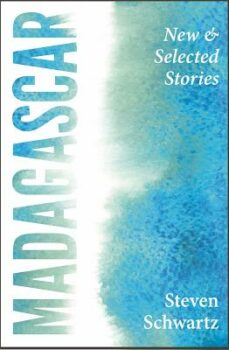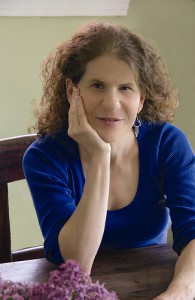
Introduction
Eileen Pollack is the author of the collection The Rabbi in the Attic and Other Stories (1991), the children’s book Whisper Whisper Jesse, Whisper Whisper Josh (1992), the novel Paradise, New York (1998), the creative nonfiction title Woman Walking Ahead: In Search of Catherine Weldon and Sitting Bull (2002), and the collection In the Mouth (Four Ways, 2008), which won the 2008 Edward Lewis Wallant Award and was shortlisted for the Sophie Brody Medal for Jewish literature. Her most recent book is a creative nonfiction textbook and anthology, Creative Nonfiction: A Guide to Form, Content, and Style, with Readings (Wadsworth/Cengage, 2009). Her fiction and essays have been published in numerous journals, among them Ploughshares, Prairie Schooner, Michigan Quarterly Review, SubTropics, Agni, and the New England Review, and two of her stories have been awarded Pushcarts. Her novella “The Bris” was selected by Stephen King for inclusion in the Best American Short Stories 2007 anthology. Pollack has received fellowships from the National Endowment for the Arts, the Michener Foundation, and other organizations. She is currently the Zell Director of the Creative Writing MFA Program at the University of Michigan.
Those of us who have experienced Eileen’s graduate workshop remember vividly her senses of humor and humanity, her rigorous defense of plot and theme, and a Grade A+ bullshit detector. Also, her comments, varying from the wildly enthusiastic—I love the way this sounds or Prose is great here—and remonstrative—So many neat phrases in the story, why choose something so generic and general for the title? She is usually right, either way.
I sat down with Eileen at her home in Ann Arbor, MI, in May of 2009 to discuss her experience in directing the MFA program, writing stories and novels, making collections, and being bold in one’s fiction. Her home is, not surprisingly, about one block away from two different dentists.
Interview
BRIAN RALPH SHORT: This coming year is your last as director of the University of Michigan MFA program. How does that feel?
EILEEN POLLACK: It would feel better if it was this time, next year [laughs].
How does your job affect your writing rhythms? During the year, you’re teaching as well as directing. Do you just binge-write during the summer?
It — more than anything in my life, even more than having a kid — has completely nuclear-exploded my attention span. I’ve always been somebody who could really focus, and now I have ADD. I used to just apportion my day, so I would write in the morning, and then switch gears around 11:30, and think, okay, now I teach. You can more or less control your teaching time, because you know when you are teaching: you can say, I’ll grade papers at a certain time. Of course, there is some backwash in that. I’ll find myself thinking about my student’s novel instead of my own, you know. How could Brian solve that problem in his story? And then I say, wait, I’m not going to think about that until this afternoon. But with directing an MFA program, it is just always coming at you. Bing, another email. Something has gone wrong. Or there’s a meeting with somebody higher up the food chain, and you’re not going to say, well I’m sorry, that’s my writing time if you’re meeting with a donor or somebody [laughs]. Also, you have 48 current students, and any Zell fellows or alums who are around, and if anyone is having a crisis at ten in the morning, or whenever. Whereas I could farm my son out to daycare when he was two, you know? And if he started crying during that period, they had to mop his tears. But if an MFA student is crying, I’m the daycare provider. [laughs]
Mother plus day care provider—
Please write that I’m laughing as I say all this! [laughs] Because I love all of our MFA students, and I like helping them through life. But there are a lot of things that come up. The provost or the dean decides it is a good time to train you to do x, y, or z. And you need that training. You need to know what is going on. There’s just a lot of behind-the-scenes work that nobody, except for former directors, knows exists. And this is with the assistant director working full-time.
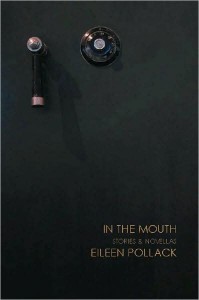
Last year, while you were in the middle of the directorship, your collection In the Mouth came out. How has that experience been like? How do you balance supporting the book with teaching?
Well, it’s a very happy problem to have. I’m thrilled that the book came out. I’m thrilled that people want me to give readings. I got to go on a tour for the Jewish Book Council. These are all great opportunities. When things are hectic because you’re happy, that’s much easier to deal with. And the students are great, they understand if you have to be out of town to give a reading or whatever. With email and a cell phone, you can keep in touch pretty well. It was very hectic, but it was very enjoyable. I just ended up pumped. I made a vow, early in my life, listening to people complain about the arduous nature of their book tours that the last thing I would ever do was complain. Because I have a great teaching job, I got to direct the best MFA program in the country and go on a book tour for a book that was getting nice attention. This is not a complaint. I got revved up. It might have been hard for my partner to be around me, because I get manic. But it was very enjoyable. Everything feeds everything else.
There’s more than a decade between the last collection and your current one, between The Rabbi in the Attic and In the Mouth.
Even longer, I think. The first book was accepted the week after my son was born, in 1990, and I guess it came out a year later. The novel [Paradise, New York] came out in 1995—
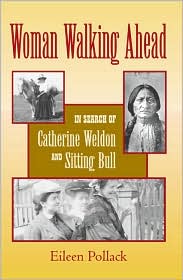 And Woman Walking Ahead came out in between that and In the Mouth. I reread the story collections back to back, and there’s this really interesting baton-passing that goes on in between the books. “Neversink” is the last story in The Rabbi in the Attic, and in “Neversink” we have the two main characters, Diane and Jack, and in it, Jack is preying on her, or resisting and then preying on her, and there’s this kind of motion in the story. But you open In the Mouth with “The Safe,” and that story is also concerned with these boundaries between older and younger people, and in “The Safe” there’s this turning away from the damage that could be happening, an articulation of what it takes to resist all that. Were you thinking about that at all when you were putting In the Mouth together?
And Woman Walking Ahead came out in between that and In the Mouth. I reread the story collections back to back, and there’s this really interesting baton-passing that goes on in between the books. “Neversink” is the last story in The Rabbi in the Attic, and in “Neversink” we have the two main characters, Diane and Jack, and in it, Jack is preying on her, or resisting and then preying on her, and there’s this kind of motion in the story. But you open In the Mouth with “The Safe,” and that story is also concerned with these boundaries between older and younger people, and in “The Safe” there’s this turning away from the damage that could be happening, an articulation of what it takes to resist all that. Were you thinking about that at all when you were putting In the Mouth together?
It’s really funny. First of all, no, I wasn’t thinking about any of it. I thought you were going to say the handing off happened from the ending of “Neversink,” holding her son on her lap, and leaning down to nurse him, and “The Safe,” and that child a couple of years older, as a toddler. I don’t see either of those stories having to do with abuse. Well, they have to do with what abuse is or isn’t, emphasis on the isn’t. I think it’s easy to read “Neversink” as a horror story about an older teacher preying on a young female student, or “The Safe” as being about a mother who holds back from preying on her son–but that’s not what either is about at all. It’s the opposite. There are two stories in The Rabbi in the Attic about the relationship between Jack Noble and the narrator. I always get confused about my narrators’ names because they’re all the same person [laughs]. That one was—
Diane Roughman.
Right, right, Dianne Roughman [laughs]. That was written in response to something that had grown up in my lifetime, which was this presumption that if there was an affair between an older man and a younger woman, especially if one was a teacher and one was a student, that it was always, always always a case of abuse, and the young woman had absolutely no agency in it and was not to be held responsible at all. I’m certainly not in favor of high school teachers, junior high school teachers, college professors, anybody targeting their students—I’m glad that we live in a society where it’s not accepted that female students are fodder for older men. But I thought that blaming teachers alone was too simple-minded, that it denied young woman an agency or maturity. You know, a 17-year-old girl in an earlier time or in a different society would be married with two kids. I know from experience that young women, whether in high school or college, often develop feelings for their teachers and want there to be a relationship. So the question is—and it’s very much a question: I never write about anything I know the answer to—where’s the line? And who has what kind of agency and who should suffer for it? At the end of that story, Diane is saying: At the time I felt I really had something to do; there was a two-way relationship, and I was using him for a certain kind of experience. And I walked away scot-free, emotionally and in terms of any effect on my later life. Yet he lost his job, which he loved the best. He seemed to love me more than I loved him. So the point was, I think I see something going on in society, and it’s not as simple as you guys say.
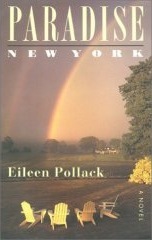 And then “The Safe” came about because I noticed when my son was young that many parents I knew had become terrified of touching their children…of touching anyone else’s child. Anything could arouse suspicion. Even having them on your lap, watching them run around naked, just delighting in how beautiful children are as one of the main joys of being a parent. All sorts of weird incidents started happening. Some of us were at a lake one day, and a friend’s daughters, who were two years old, wanted to go swimming, so they ran around the lake naked. Other mothers started screaming at the mother that there were older boys present, and the act of having the older boys present, looking at the young girls, was abusive. I especially heard my male friends about how they were too afraid to give their own daughters a bath. They were afraid someone was going to be looking in the window and report them to child services.
And then “The Safe” came about because I noticed when my son was young that many parents I knew had become terrified of touching their children…of touching anyone else’s child. Anything could arouse suspicion. Even having them on your lap, watching them run around naked, just delighting in how beautiful children are as one of the main joys of being a parent. All sorts of weird incidents started happening. Some of us were at a lake one day, and a friend’s daughters, who were two years old, wanted to go swimming, so they ran around the lake naked. Other mothers started screaming at the mother that there were older boys present, and the act of having the older boys present, looking at the young girls, was abusive. I especially heard my male friends about how they were too afraid to give their own daughters a bath. They were afraid someone was going to be looking in the window and report them to child services.
And I thought, wait a second, there’s an equal and opposite danger here to the child abuse, which is a real danger, which is that we’ll become so freaked out that we will deny our children any physical contact and deny ourselves this delight in the beauty of childhood, of naked childhood. But obviously it’s a very dangerous line. I don’t think that the mother [in “The Safe”] is guilty of anything. The only time she even remotely crosses a line, she’s so upset she runs away. And then she realizes that her father and her father’s generation suffered this crippling fear of their daughters’ sexuality, even from infancy. And we sure don’t want to go back to that. Now I’ve had a couple people come up to me after I’ve read that story and say you’re wrong, that story is evil, what she does is child abuse and you condone it. But I’ve had many, many, many more people come up after and say, my god, you really captured it. I once read that story at a retirement center in Massachusetts, it was an old factory town where all the old factory workers were coming to this center for arts. So the audience was full of these men who had made shoes all their lives, and they were in their 60s, 70s, 80s, and these guys lined up to tell me that that story had made them cry, that they had found themselves so unable to express the joy they took in their children’s physical being when they were young, and they’d never heard anybody express it.
So I think the handing off is true; you’re astute to see the thematics working there. Also, I’m passing from being Diane, who is the young woman, the daughter–oh what are my parents going to think of me?–to whoever the narrator of “The Safe” is [laughs], who is now the mother, who is wondering, what am I doing to my child? So it’s passing from a collection about being a girl and a young woman to being a young mother and a middle-aged mother and wife, and so, you know, that’s part of the hand-off too. But for the thematics, it’s almost the flipside of what you were saying.
At the beginning of The Rabbi in the Attic you give us a very young woman exerting her independence for the first time, sort of refusing to be taken care of by her parents. And you offer “Beached in Boca” at the end of In the Mouth, where the woman is taking care of her father. So there seems to be this double framing—
I never thought about it like that. I wish I could say I planned it [laughs].
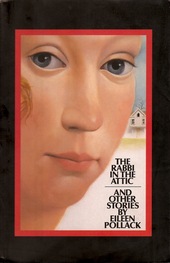 You also mentioned the linked stories, “Hwang’s Missing Hand” and “Neversink” [from The Rabbi in the Attic], and “Milt and Moose” and “Beached in Boca” [from In the Mouth]. Did you know these were going to be paired stories when you started writing? Or did the characters refuse to shut up? What’s the process like, writing these diptychs?
You also mentioned the linked stories, “Hwang’s Missing Hand” and “Neversink” [from The Rabbi in the Attic], and “Milt and Moose” and “Beached in Boca” [from In the Mouth]. Did you know these were going to be paired stories when you started writing? Or did the characters refuse to shut up? What’s the process like, writing these diptychs?
You know, it’s that I can’t write short. I sit down to write a short story, it comes out a novella. I sit down to write a novella, it comes out a novel. I knew I wanted to write a story set at that insurance company in “Hwang’s Missing Hand” and “Neversink.” It grew into being a story about Diane and Jack, but at the story’s end, I hadn’t said everything I wanted to say about that relationship. I was learning how to focus my stories. When I left grad school, I still couldn’t figure out how to focus a mass of material into a story. You know, I had all this dough, and I had to learn to separate it into, here’s a loaf of bread, here’s some rolls, here’s some muffins [laughs]. I was learning how to divide up the material. One story covers the beginning of Diane’s affair with Jack, but there was stuff I wanted to say about the end of that, who is responsible for getting going and who suffers from the aftermath. There were other things I wanted to say, too, about how you make moral decisions. Is it based on empathy? I’m a nice person, and I wouldn’t do bad things; I feel for other people, so of course I’m not going to hurt anybody. Which only goes so far. Or is it based on something more rigid? Thou shalt not kill, thou shalt not commit adultery. It doesn’t matter whether you want to or not, whether you feel good about it or bad about it. I hadn’t said everything I wanted to say. In the first story, I had to focus it around one thematic question and one conflict. I had this sense of unfinished business, so I did another story with them. Which is pretty much what happened with “Milt and Moose” leading to “Beached in Boca.”
Although there, the material was different. I wanted to do a story based on my father’s last day as a dentist in this town where he’d taken care of these people for so many years. He had done so much for these people and when he went to retire, people were furious, and instead of saying thank you for all this care, they were cursing him because he wasn’t going to take care of them forever. But that’s what we do to God. God does everything for us, but we say, yeah, but you didn’t get my novel published for me. And he’s like, I gave you life [laughs]. I gave you love, I gave you a great kid. I conceived of “Milt and Moose” as this dentist experiencing this and then doing it to God. I don’t even know if I believe in God, but I believe in the idea of God enough that it shapes how I write stories. When I went to write the long novella at the end, “Beached in Boca,” it actually came out of two clippings my father had sent me. By then he and my mother had retired to Florida, and they were in this development, this odd place. He sent me two clippings. The first was about senior citizens in Florida getting AIDS. No one had ever thought to tell senior citizens to use condoms, to not have unprotected sex. And then he had sent me this story about someone in the next pod who had sold his house long ago in New Jersey, and then the new owners dug up this body. Then the police called him and said, do you know anything about this? And he said, yes, I’ll come tell you about it, and instead of going to the police station, he shot himself. I thought, what’s my dad trying to tell me? [laughs] He’s trying to tell me that these middle-class Jewish men who led such upstanding lives were still human.
My dad, of course, had this great marriage with my mother. He certainly wasn’t going to put a body under the house. And yet, these are the clippings he and my mother sent me. So I thought okay, I’ll turn those into a story, or a novella. That one had to be a novella, there was so much plot. It probably should have been a novel. So then I thought, well, who are these people? I didn’t really want to create a new dentist, who would move to Florida, so. And I already had one, so I picked up Milt from “Milt and Moose,” killed off Moose, killed off Milt’s wife, and said, he’s lonely. He’s the one who picks up AIDS, and someone else in the pod is the killer. But I wasn’t interested in him; I was interested in the children.
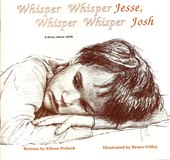
Pollack's 1992 children's book about AIDS
It’s in the newspaper, the story about the house in New Jersey and the suicide. And then she meets the son by the pool, and there’s this exploration of the story behind the story in the newspaper. And that takes me back to “Hole in Empty Pond,” from The Rabbi in the Attic, which is about this journalist trying to get the story, but she’s on deadline and there are all these obstacles and barriers to getting what the real story is. And then there’s this break, and we get the actual story behind this incident. And there seems to be this link, this interest in trying to document things that are difficult to document, the lives going on behind these headlines. There’s what we know about old people’s lives in Florida, but there is all this other stuff going on: tires being slashed, the vandalism, the joke about the woman who invites a man into her bedroom then slaps him, and he says I thought you said I could come in? And she says, of course, but I didn’t say you could park in my spot. There’s this sense that all of this stuff, what people outside this world don’t know about, needs to get said. Is that what you see the job of a writer as? I’m probably overstating it—
You’re not overstating it at all. It’s funny. I was a journalist, however briefly. “Hole in Empty Pond” happened very early on; it was probably my first big news story. I was hired as a feature writer, and everybody was busy covering the 1980 presidential primary race in New Hampshire, so occasionally they would send me off on a news story. And I was shy, and I covered this one story where the police pulled this guy out of the ice. The police gave me the story, which was very disrespectful to the guy. They pointed out that his girlfriend was there, and she was crying, and I didn’t want to bother her. So I wrote the story from the police’s point of view. The piece came out in the paper and the girlfriend called me up; she called the newsroom and I just happened to be the only one there. She said, you didn’t know anything about him, and she gave me this version where, if you draw a map from the hospital to our place, this pond is right on it, and here’s what happened: this is why he was scared of hospitals. And it hit me like a bucket of cold water that you couldn’t just take the official version. But how do you get the guy out of the pond? It was just so striking.
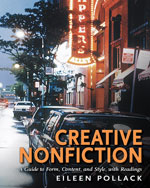
Pollack's new creative nonfiction anthology/textbook
What happened when I wrote In the Mouth, though—I had become a parent by then, and I realized you don’t even know your parents or your kid. I had always thought I knew my parents; they always seemed like pretty simple people. But I knew they didn’t know me. I figured they would be horrified if they knew what my life was really like. And then I had my son, and I tell him all sorts of things about my life. And he thinks he knows me. But I leave out a whole lot [laughs]. And I think he doesn’t know anything. But then again, I probably don’t know as much as I think I know about who he is. And certainly I don’t know as much about spouses, significant others, friends. I think it’s really an illusion when people are all, look at this, how open I’m being, so you don’t see what they’re holding behind their back. It’s a distraction, a decoy.
Almost all the stories in In the Mouth are about parents and children thinking they know each other, and not knowing. Not so much even in terms of secrets. There are the two images in “The Safe”–one is of the opening story, which is a true story, that my father as a dentist once looked down and said he knew she was pregnant, said he could see the fetus, and she believed him. That whole idea of what you can tell about somebody by literally looking at them. And then there’s the safe, in the basement. My father had a safe like that in the basement of his offices, a place that was a funeral home before it became a dentist’s office. He was going to sell the place with the safe, and we were like, don’t you want to see what’s in the safe? No, no, I’m sure it’s just other people’s tsoris, their troubles, and I have enough of my own. And I was like, how can you not? But that idea that there’s something there, there’s a secret—my generation, you want to know all the secrets, open everything. If there was abuse, man, we’ve got to know about it. And his generation? They’d rather not know.
And that’s what’s so shocking about “The Safe.” The imagery and language are really arresting. The little girl playing at the sprinkler is compared to Marilyn Monroe standing over the steam vent. And then just the idea of giving away the safe without opening it at all, and the way that resonates thematically, about boundaries that are not crossed, things returned, that has nothing to do with me, that’s not mine. This sense of boundaries kept intact. It’s gutsy terrain, right? And “Milk” [from In the Mouth] is another story that seems kind of dangerous, courageous. I want to see these read out loud somewhere just to see people’s faces. Have you read “Milk” out loud?
I’ve had people cry. But I just don’t think of these stories as daring. I don’t want to be tame, or just, unnoticed. They’re the things…how can you not talk about them?
“Milk” is also based in reality. I really had a hospital roommate like that when my son was born. And everything that happened in there was actually happened worse. I had to tone it down because people didn’t believe. I gave early drafts to my writer friends, and they were like, Eileen, this is over the top, nobody’s going to believe this. Of course, I had been sitting in my hospital bed, nursing my son with one arm and writing down exactly what I was hearing from the other side of the room. And my ex-husband was there listening, too, and he has his MD and his eyes were wide open. The only difference is that once they took her baby to intensive care, I have no idea what happened. I assumed the baby lived. I never went to visit. But otherwise, that story is almost verbatim, what happened. And so if something like that happens to you, you’re basically lying there, thinking, well, now I know why so many more black babies die than white babies. How can you not write about it?
There was a famous magazine, which will remain nameless, that was going to accept the story if I was African-American, but learning I was a white writer, they decided it was a racist story. And it took an editor of color to accept it. It was then broadcast on a black radio station in Boston. Why is writing a story about how the white establishment (that thinks it’s liberal) is still killing black babies “racist”? That’s too strong. I don’t know if this child died, but that clearly was how it happens.
Is it harrowing, looking over material that’s autobiographical in nature, that stands as a record of what really happened?
I don’t find it that way. That, to me, is not what’s harrowing about being a writer. Trying to get stuff published is what’s harrowing [laughs]. Writing it is not. I can take the heat. Most audiences are really responsive. I almost never get negative responses from readers and audiences. It’s editors who drive me crazy: I think they’re timid. Their notion of what’s brave or boundary-crossing or edge-pushing is very timid compared to what people actually want to read about or hear at a reading. I don’t know what they think they’re protecting.
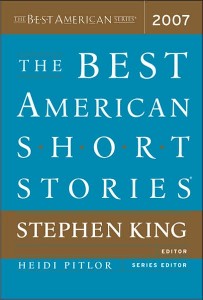
That reminds me of Stephen King’s introduction to the Best American Short Stories 2007, and that The Bris [from In the Mouth] was selected for. In that introduction, he talks about the state of the contemporary American short story: that when writers are writing for editors and not for readers, there is a weakening or diluting of drama in the stories. Now everything is crisp and polite and just rotten with epiphany, but there’s no real drama.
I think it’s also—I don’t blame workshops for this, but I think people are so afraid of alienating anybody in workshop; they just want to please too many people. I always think I’m so thin-skinned, and then I realize other people are much more sensitive [laughs]. One of the best things I did as a writer was to be a volunteer reader for Ploughshares. This was when I first got out of Iowa. I read for DeWitt Henry for quite a few years. When you read for a journal of that caliber, and you see how many stories come in versus how few get taken–and how many good stories there are in those piles. You realize that it takes being bold and brave to get noticed. I would never write a story just to be sensationalistic. I’m not going to put in an act of violence just because somebody’s going to like it. But I’m not going to shy away from boldness.
You have to understand where I grew up. I grew up in the Borscht Belt. The jokes my father told at the dinner table when I was six years old you probably wouldn’t tell to another guy [laughs]. It was a very bold place to grow up. Jerry Lewis was the busboy at the hotel down the road. He got his start at the age of 16, throwing the boxes of dirty dishes around. I just went to see Star Trek two nights ago, and I saw the producer’s name—Oh, I grew up with him! Every time I go to the movies, half the producers came from the Catskills, the directors, people who went on in entertainment from a town of 5,000 people. It just was a raucous, sexually bold, crazy, crazy place to grow where everybody was in some way related to the entertainment or resort industry.
Do you feel like there are journals out there that get it right, that go for bolder material, that don’t shy away? Are there places that you like for actual drama?
I like a lot of journals, especially the ones that have published my work. [Laughs.] There seem to be certain editors that like boldness, and some that it totally scares away or turns off. I guess it’s a matter of taste. There are people who say I use too much plot, or too much sex, or too many dirty jokes, too much humor, my strokes are too broad. And sometimes they are. I’m sure if I redid Paradise, New York, it wouldn’t be so slapstick. I started that in graduate school. But I like that. The first thing I love, when I read, is the language. Just like any literary writer, it’s got to be about the voice. I can’t read anything where I don’t like the voice. But then what do I like? I like plot, I like setting, I like humor, I like boldness. I think part of it has to do with being female. No one ever told Philip Roth to be more timid or nice, to have nicer characters or less sex, to not be as broad. And when a woman tests boundaries, it’s seen as unbecoming. We’re supposed to write these quiet, domestic stories or novels. I’ve just never been one to do that.
In “Beached in Boca,” you have switching points of view in the story. It seems that when you switch back and forth between daughter and father, and later between the two love interests, that these change-ups do a lot to keep readerly attention and establish a faster-paced momentum to the story. There’s this little burst of energy at the beginning of each scene. There’s often a kind of baton-passing. One person ends a scene by looking at a seashell or a phone, then the other person is looking at it and they’re seeing something totally different. It also seems like it’s really hard to do, keeping track of where everyone is, moment-to-moment, keeping tabs of everyone’s shifting mental and emotional states and compensating for any time lapses that have fallen in between.
It’s funny: that kind of stuff really appeals to me. I was a physics major. I enjoy having a complicated system in my head and trying to get it to work and not have to get my hands dirty. I was terrible in lab. I was good at theoretical physics. I like thinking about the universe but not having to build one with my hands. It also takes practice and lots of drafts and reading other people’s books to see how they’ve done it. That novella used to have many more sections. I got into [the killer’s son] Adam’s mother’s head. All sorts of other people’s heads. I switched things around and took things out, left it alone for a couple months then came back to it. I also have a novel that’s going around that’s multiple points-of-view, and it went through so many different incarnations–some in first person, some in third person, some omniscient–until it finally settled into alternating third-person narrators.

Angell Hall, home of Michigan's Creative Writing department
You mentioned my characters passing the baton to each other. I felt so proud of myself because I figured out how to do that. And you know, we get all these craft talks at the MFA program, right? I get much more out of them than the students do because I have these questions that nobody has ever answered. I heard Antonya Nelson, who I respect enormously, talking about how to change point-of-view in a story or a novel. And she said, oh, the people who aren’t that good at it pass the baton off from one character to another, from one chapter to the next or one paragraph to the next. But if you’re really good you just do it seamlessly within a paragraph. And I’m like, oh my god! That’s the next level. What I see with people who have been writing for a while is, they’ve written a whole story or a novella or a novel without ever settling on a point of view. In a given scene, it’s happening in limbo. It’s not being experienced by anybody. It’s not being experienced by the man or the woman or the omniscient narrator, any of whom would have a different set of emotional and intellectual responses to the same set of elements or the same set of events. Do we feel the man’s hurt feelings or the woman’s rage? Or is the narrator sort of benign, oh, another middle class couple fighting and divorcing. If you’re good, you know in pretty much every paragraph who is experiencing it. Now in a first-person narration, you don’t ever have to worry about that. But any kind of third person, even where there’s only one consciousness, there’s the question: are you in that consciousness, or are you in the narrator’s consciousness, which may be a little bit distant? You usually can’t achieve this in a first draft. You layer it on. Maybe you need to get the bare-bones events of the story or novel down, then go back and think, well, in this scene, who is experiencing it? And redo it from that character’s emotional and intellectual point-of-view. It’s tricky. There’s a lot to learn and to practice.
You talk about writers that you were looking at while you were composing. Did you have any books in particular you were keeping open while you were working on In the Mouth?
There are people that, in writing The Rabbi in the Attic and In the Mouth, I learned a great deal from, about voice and technique. The usual suspects, really. Munro, Paley, Malamud, Bellow, Roth, Cheever, O’Connor, Updike, Baxter. Lynne Sharon Schwartz, who was one of my teachers. McPherson, who was one of my teachers. And Richard Ford. He’s so good at the meditative stuff. Some of the Europeans, like Kundera and Bruno Schulz. I get stuck, I go back and see them. Cheever and O’Connor are great at that layering between a character and a third-person narrator, whose language is reflected in the passage.
I just read Schulz for the first time this semester.
Isn’t that incredible? I read that in graduate school and it changed my life. That’s where all the metaphors come from. And the objects. I just thought, that’s right! Objects are magical!
Speaking of which, objects have a way of becoming menacing in sudden and shocking ways in your stories.
Not beautiful?
Both! Of course, both! There are the objects that are hugely symbolic, we have the safe [from “The Safe], we have the basin [from “The Safe], even the car with its tires slashed [from “Beached in Boca”]. These are powerful and beautiful. But there’s also a sense that objects that seem at first to be not quite in focus turn into bombs, which tick and then go off. I’m thinking about the scene in The Rabbi in the Attic where the little boy is burning the mice in the shoebox, and he drenches it in gasoline, and then he sets the box on fire, but the can also explodes. I was staring at the mice; I was focused on the mice, thinking, oh my god, he’s going to kill those mice when the gas can goes off. There’s the air conditioner from the story “The Air Conditioner” [from The Rabbi in the Attic]—
That’s the first thing I ever wrote [laughs]—
It’s sitting in the window, and the woman in the story swivels her hip just a little, and it tumbles out. Do you know as you put objects in place that they’re going to become weapons?
Some I do, and some I don’t. Some of the weapons, I do, like the air conditioner in that story. That’s all I knew when I started: when an air conditioner falls out of a window, something’s going to happen. Sometimes, with acts of violence, I know what’s happening. But I shy away from that the older I get, the more I write. I once had a boyfriend who said, Eileen, why does there have to be terrorist activity in every one of your stories? [laughs].
Now, the joy I find is discovering the significance of the objects. My favorite was that magic carbon from the insurance company [from “Hwang’s Missing Hand”]. She doesn’t know what to do with it, and it becomes a metaphor for empathy– for feeling something in an attenuated way, the way that someone else is feeling. You’re shocked as a kid when you feel for another person. Being a kid is all about feeling for yourself; being a teenager is all about your own feelings; and suddenly, as you’re growing up, you feel someone else’s pain. It’s like those magic carbons! They were already in the story because they were in the setting. And I think the shift that happened when I was growing as a writer: instead of planting objects like bombs that I was going to detonate later, which became too premeditated, I work with what’s there. I feel much more confident about how stories work and how themes get in stories, which is the way they get in our own lives. There are objects that just start to take on a kind of resonance for you. Now, you might not know what was resonating or what that means until later in your life, but later, you do. And so my characters, my narrators, discover those resonances as the stories progress.
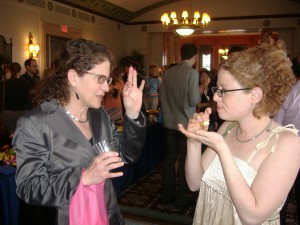
At the 2006 Hopwood Awards reception, Eileen talks writing with former student Jenni Ferrari-Adler
Further Resources
– Via the Four Ways website, read a short excerpt from Eileen Pollack’s novella The Bris (from In the Mouth).
– You can read the entirety of her story “Milk,” which is discussed in this interview, in Ploughshares.
– Also available online (via most library subscriptions) is Pollack’s essay on Flannery O’Connor in American Literary History.
– This In the Mountains interview with Pollack anticipates the 1998 publication of Paradise, New York.
– If you’re shopping for books by Eileen Pollack, visit your local indie bookseller.

Editor’s Note:
Though she may not know it, Eileen Pollack is one of the Muses behind Fiction Writers Review; she helped inspire this site when, in her contemporary American novel class, she assigned each of her MFA students the task of writing a review-of-reviews, or a synthesis/analysis of several published reviews of a novel. During the research process, my classmates and I were shocked to discover how few reviews of novels — even relatively famous ones — were actually published, and that fiction made a very poor showing, overall, in most book sections or reviews. We also noticed that not many critics writing about fiction today were fiction writers themselves. When we brought these issues up in class, Eileen gave us even more to think about: What are the potential consequences of harshly criticizing another writer’s work when you have a book on the horizon? And conversely, how much could readers trust your gushing praise of a writer who is (obviously, or not) your friend or colleague, or someone influential you hope to impress? What expectations are there when the author you’re reviewing is from a minority group you also identify with — or when that author comes from a background different from your own? When is a negative review useful, and when is it merely harmful? When is a positive review useful, and when is it merely an advertisement? And what is the value, if any, to the neutral review, one that merely introduces a book’s story, sans critical analysis or opinion? The territory among these questions is often murky, but navigating it is important: thanks in large part to Eileen’s influence, we at FWR continue to debate and address these issues, both on-screen and off.
–Anne


